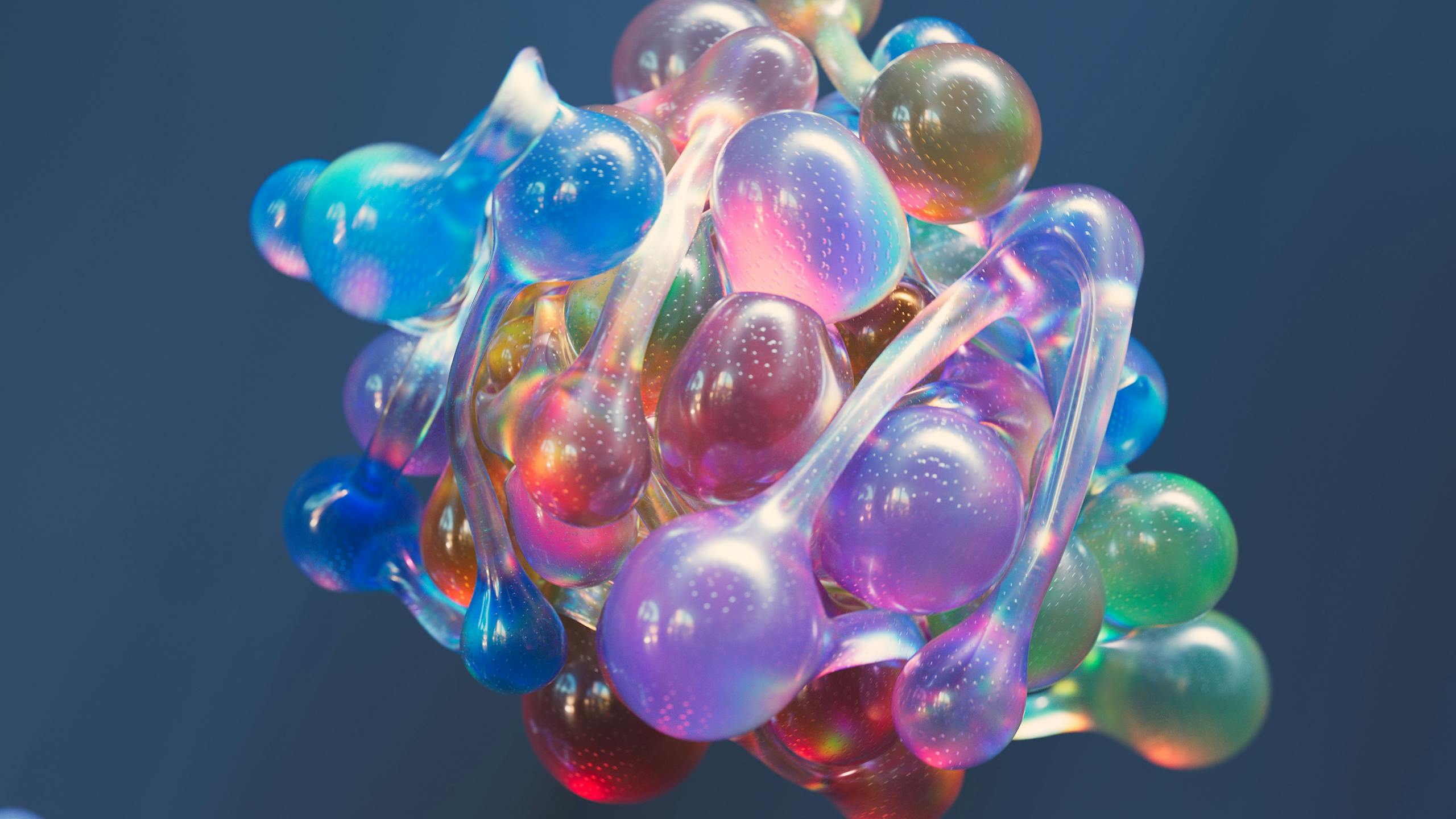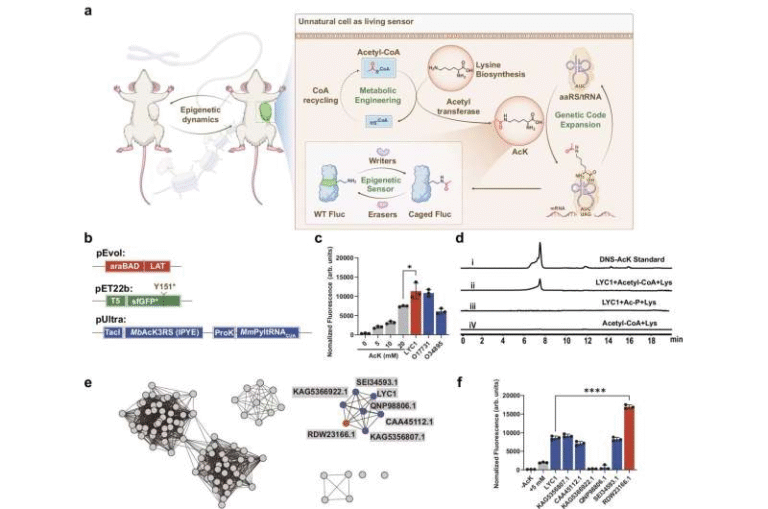Scientists Create a Molecular Movie Showing How Cells Build Their Protein Factories

For decades, scientists have been fascinated by ribosomes—tiny molecular machines that read genetic code and build every protein needed for life. Despite knowing how crucial they are, one major question remained unanswered: how are ribosomes themselves assembled inside a cell?
Now, researchers from Rockefeller University have taken a massive leap toward solving this mystery. By combining artificial intelligence, cryo-electron microscopy (cryo-EM), and genetic experiments, they’ve managed to capture what they describe as a “molecular movie”—a near-continuous visual sequence showing, in real time, how the small ribosomal subunit (SSU) forms and matures inside the cell. The findings, published in Nature in October 2025, represent one of the most detailed views ever achieved of this essential biological process.
The Challenge of Understanding Ribosome Assembly
Ribosomes are often called the cell’s protein factories, but assembling these factories is one of biology’s most complex construction projects. Every cell invests enormous energy into producing ribosomes, each of which contains thousands of molecular components, including proteins and RNA molecules. Yet the process of bringing all these pieces together—known as ribosome biogenesis—has long been a mystery.
Earlier studies could only capture isolated “snapshots” of intermediate steps in ribosome formation. Scientists knew that certain helicase enzymes, such as Mtr4 and Dhr1, played key roles, and that some proteins appeared and disappeared at specific stages. But how these events were coordinated—and how the process moved forward without backtracking—was unclear.
The new study fills that gap by showing exactly how cells control and sequence the events that lead from raw molecular components to a finished, functional small ribosomal subunit.
Using Artificial Intelligence to Guide Discovery
Instead of starting with traditional laboratory work, the researchers began with artificial intelligence predictions. They used AlphaFold, a powerful AI tool developed by DeepMind, to predict more than 3,500 possible interactions among the proteins and RNA molecules involved in ribosome formation. These predictions served as a roadmap, helping the team decide which molecular interactions to test experimentally.
This AI-first strategy allowed them to design precise genetic and biochemical experiments in yeast cells. By tagging and tracking specific assembly proteins, the team could monitor how they behaved during the assembly process.
This approach represents one of the first major ribosome studies built around AI-guided hypotheses, showing how computation can speed up discoveries in structural biology.
Capturing the Molecular Movie
To visualize ribosome assembly, the researchers relied on cryo-electron microscopy, a powerful imaging technique that captures biomolecules in high detail at cryogenic temperatures.
They collected over 200,000 microscopic snapshots and reconstructed sixteen distinct 3D structures representing different stages of the small ribosomal subunit’s formation. These structures, which range in resolution from 2.7 to 6.0 angstroms, reveal the step-by-step transformations that occur as the immature ribosomal particle matures.
The sequence of 16 states effectively forms a “molecular movie”—a continuous narrative showing how RNA and proteins fold, rearrange, and interact to build the small subunit.
The Key Players in Ribosome Assembly
The study focuses on two critical RNA helicase enzymes—Mtr4 and Dhr1—and a coordinating protein named Utp14.
- Mtr4, part of the RNA-degrading complex known as the exosome, acts like a molecular motor. It degrades a stretch of RNA called the 5′ external transcribed spacer (5′ ETS), an essential step that pushes the assembly process forward.
- This degradation triggers a series of irreversible rearrangements and releases certain proteins, ensuring that the process moves only in one direction.
- Utp14 functions as a central coordinator. It monitors the structure of the forming ribosomal subunit and activates Dhr1 at just the right moment.
- Once activated, Dhr1 unwinds a helper RNA molecule called U3 snoRNA, enabling a crucial folding event that completes the subunit’s structure.
Together, these components orchestrate a complex but precisely timed series of events—like a molecular relay race where one enzyme hands off the baton to the next.
Built-In Quality Control
The researchers also uncovered a sophisticated quality-control system that ensures only correctly assembled ribosomes move forward. Throughout the process, the RNA exosome remains tethered to the developing ribosomal subunit, monitoring its progress. As assembly nears completion, these connections gradually loosen, and the exosome switches from construction mode to inspection mode, verifying that the new ribosome is fully functional.
If errors occur, the exosome can remove defective RNA components, preventing faulty ribosomes from entering the cell’s protein-making machinery.
How the Study Advances Molecular Biology
This study marks a technological and conceptual milestone in molecular biology. Previously, scientists could only infer ribosome assembly by comparing a few distinct snapshots. Now, they can observe the entire progression in near-continuous detail, capturing how RNA and proteins “talk” to each other as they build one of life’s most important machines.
The data include over 50 unique assembly factors, 21 ribosomal proteins, and three RNA molecules (5′ ETS, 18S rRNA, and U3 snoRNA). By tracing these interactions, the team constructed a comprehensive timeline of small subunit maturation, showing which proteins join or leave at each stage.
Importantly, the study suggests that RNA degradation isn’t just cleanup—it’s an active driver of ribosome assembly. The exosome’s breakdown of RNA components triggers structural transitions that move the process forward.
Why Ribosomes Matter So Much
Every living organism, from bacteria to humans, depends on ribosomes to produce proteins. These proteins handle nearly every function in life—from muscle movement and immune defense to cell repair and genetic regulation.
Defects in ribosome assembly can cause a range of human diseases known as ribosomopathies, which include certain forms of anemia, bone marrow failure, and developmental disorders. Understanding the mechanics of ribosome formation may one day lead to new medical treatments that target these molecular defects.
Ribosomes are also of interest in cancer research. Because cancer cells divide rapidly, they must produce large numbers of ribosomes. Understanding how ribosome production is regulated could provide new therapeutic targets for slowing or stopping tumor growth.
The Role of AI in Modern Biology
This research also showcases how AI is transforming biology. By starting with computational predictions instead of trial-and-error experiments, scientists can now map out complex molecular interactions faster and with greater accuracy.
AI models like AlphaFold have already revolutionized protein structure prediction, but their integration into experimental biology—like in this study—marks a new phase where AI guides discovery rather than just interpreting data afterward.
Future research may apply similar AI-driven strategies to other cellular machines such as the spliceosome (which edits RNA) or telomerase (which maintains chromosome ends).
What Comes Next
The Rockefeller team plans to extend their work to earlier stages of ribosome formation and to explore how the large ribosomal subunit assembles. They’re also interested in understanding how quality-control systems detect and eliminate assembly errors.
With their AI-driven model and advanced cryo-EM methods, researchers can now reach resolutions fine enough to track how non-living molecules start to behave like living systems. In many ways, studying ribosome assembly provides a glimpse into one of the most fundamental moments in biology—how life constructs the machinery that sustains itself.
A Step Closer to Life’s Origins
Ribosomes occupy a unique place in biology. They aren’t alive, but they make the molecules that allow life to exist. By revealing, frame by frame, how ribosomes come together, this study moves science closer to understanding the borderline between chemistry and life.
It’s a reminder that the process of building life isn’t magic—it’s an intricate, beautifully coordinated dance of molecules that, when seen clearly, feels almost alive.
Research Paper: Helicase-mediated mechanism of SSU processome maturation and disassembly – Nature (2025)





